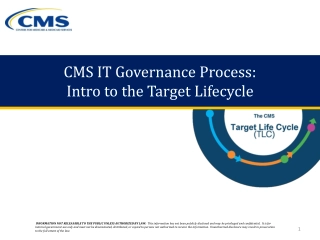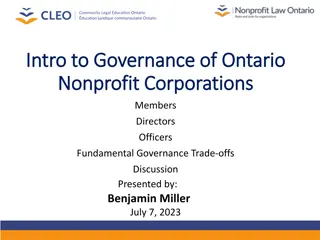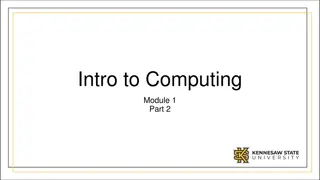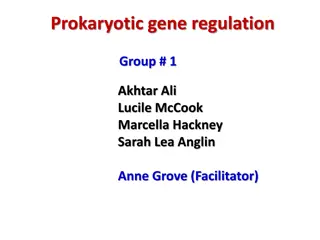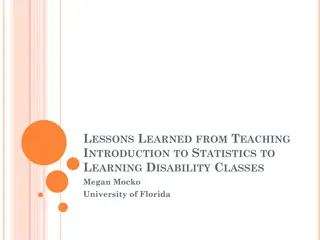
Neuroscience Exploration with Peter Latham
Dive into the fascinating world of neuroscience with Peter Latham as he covers the big and micro pictures of what the brain does, how it functions, and what you'll gain from the course. Discover the intricate processes involved in sensory input, neural networks, and motor commands as you unravel the mysteries of the brain's capabilities.
Download Presentation

Please find below an Image/Link to download the presentation.
The content on the website is provided AS IS for your information and personal use only. It may not be sold, licensed, or shared on other websites without obtaining consent from the author. If you encounter any issues during the download, it is possible that the publisher has removed the file from their server.
You are allowed to download the files provided on this website for personal or commercial use, subject to the condition that they are used lawfully. All files are the property of their respective owners.
The content on the website is provided AS IS for your information and personal use only. It may not be sold, licensed, or shared on other websites without obtaining consent from the author.
E N D
Presentation Transcript
Intro to neuroscience Peter Latham pel@gatsby.ucl.ac.uk March 25, 2021
Outline 1. What the brain does (big picture) 2. How it does it, sort of (micro picture) 3. What you ll get out of this course
1. What the brain does (big picture) sensory input (sounds, images, etc.) brain choose an action short term sensory processing (what s in the world now) construct a model of the world execute a motor command
short term sensory processing (what s in the world now) extract latent variables attach meaning and relationships to latent variables we all know what that means, but it s incredibly hard (RL) construct a model of the world choose an action move the appropriate muscles, at the right time. execute a motor command
1. What the brain does (big picture) sensory input (sounds, images, etc.) brain choose an action short term sensory processing (what s in the world now) construct a model of the world execute a motor command
2. How it does it, sort of (micro picture) Neurons!!!!
Your brain is full of neurons dendrites (input) soma spike generation axon (output) 1 mm (1000 m) 20 m mm - meter (1000-1,000,000 m)
~1900 (Ramon y Cajal) ~2010 (Mandy George) ~100 m
dendrites (input) soma spike generation axon (output) +20 mV 1 ms voltage -50 mV 100 ms time
dendrites (input) soma spike generation axon (wires) +20 mV 1 ms voltage -50 mV 100 ms time
synapse current flow
+20 mV voltage -50 mV 100 ms time
neuron i neuron j neuron j emits a spike: EPSP (excitatory post-synaptic potential) V on neuron i 0.5 mV t 10 ms
neuron i neuron j neuron j emits a spike: IPSP (inhibitory post-synaptic potential) V on neuron i t 10 ms 0.5 mV
neuron i neuron j neuron j emits a spike: changes with learning IPSP V on neuron i t amplitude wij 10 ms 0.5 mV
Simplest possible network equations: ~10 ms dVi (Vi Vrest) + jwijgj(t) = subtheshold integration dt +20 mV voltage Vthresh Vrest 100 ms time
Simplest possible network equations: ~10 ms dVi (Vi Vrest) + jwijgj(t) = subtheshold integration dt Vi reaches threshold ( -50 mV): - a spike is emitted - Vi is reset to Vrest ( -65 mV) +20 mV 1 ms voltage -50 mV -65 mV 100 ms time
Simplest possible network equations: ~10 ms dVi (Vi Vrest) + jwijgj(t) = subtheshold integration dt Vi reaches threshold ( -50 mV): - a spike is emitted - Vi is reset to Vrest ( -65 mV) +20 mV voltage -50 mV -65 mV 100 ms time
Simplest possible network equations: each neuron receives about 1,000 inputs. about 1,000 nonzero terms in this sum. ~10 ms dVi (Vi Vrest) + jwijgj(t) = dt ~5 ms t Vi reaches threshold ( -50 mV): - a spike is emitted - Vi is reset to Vrest ( -65 mV) spike times, neuron j +20 mV voltage -50 mV -65 mV 100 ms time
Simplest possible network equations: dVi (Vi Vrest) + jwijgj(t) = dt w is 1011 1011 w is very sparse: each neuron contacts ~103 other neurons. w evolves in time (learning): dwij dt s Fij (Vi ,Vj; global signal) = >> we think spikes on neuron j
Simplest possible network equations: dVi (Vi Vrest) + jwijgj(t) = dt w is 1011 1011 w is very sparse: each neuron contacts ~103 other neurons. w evolves in time (learning): dwij dt s Fij (Vi ,Vj; global signal) = >> we think spikes on neuron j
your brain ~1011 neurons excitatory neuron (80%) ~1,000 connections ~90% short range ~10% long range
your brain ~1011 neurons excitatory neuron (80%) inhibitory neuron (20%) ~1,000 connections ~100% short range
What you need to remember: When a neuron spikes, that causes a small change in the voltage of its target neurons: - if the neuron is excitatory, the voltage goes up on about half of its 1,000 target neurons on the other half, nothing happens - if the neuron is inhibitory, the voltage goes down on about half if its 1,000 target neurons on the other half, nothing happens a different half every time there s a spike! why nothing happens is one of the biggest mysteries in neuroscience along with why we sleep another huge mystery
your brain at a microscopic level ~1011 neurons excitatory neuron (80%) inhibitory neuron (20%)
there is lots of structure at the macroscopic level sensory processing (input) action selection motor processing (output) memory
there is lots of structure at the macroscopic level lots of visual areas action selection motor processing (output) auditory areas memory
Your cortex unfolded neocortex (sensory and motor processing, cognition) 6 layers ~30 cm ~0.5 cm subcortical structures (emotions, reward, homeostasis, much much more)
Your cortex unfolded 1 cubic millimeter, ~10-3 grams
1 mm3 of cortex: 1 mm2 of a CPU: 50,000 neurons 1000 connections/neuron (=> 50 million connections) 4 km of axons 1 million transistors 2 connections/transistor (=> 2 million connections) .002 km of wire whole brain (2 kg): whole CPU: 1011 neurons 1014 connections 8 million km of axons 20 watts 109 transistors 2 109 connections 2 km of wire scaled to brain: MWs
1 mm3 of cortex: 1 mm2 of a CPU: 50,000 neurons 1000 connections/neuron (=> 50 million connections) 4 km of axons 1 million transistors 2 connections/transistor (=> 2 million connections) .002 km of wire whole brain (2 kg): whole CPU: 1011 neurons 1014 connections 8 million km of axons 20 watts 109 transistors 2 109 connections 2 km of wire scaled to brain: MW
1 mm3 of cortex: 1 mm2 of a CPU: 50,000 neurons 1000 connections/neuron (=> 50 million connections) 4 km of axons 1 million transistors 2 connections/transistor (=> 2 million connections) .002 km of wire whole brain (2 kg): whole CPU: 1011 neurons 1014 connections 8 million km of axons 20 watts 109 transistors 2 109 connections 2 km of wire scaled to brain: MWs
There are about 10 billion cubes of this size in your brain! 10 microns .01 mm
2. How it does it, sort of (micro picture) That was a whirlwind tour. Things to remember: - The brain computes by passing spikes between neurons. - The weights are learned, and the brain eventually does useful stuff. - There are lots of neurons in the human brain (1011). - And even more synapses (1014).
Outline 1. What the brain does (big picture) 2. How it does it, sort of (micro picture) 3. What you ll get out of this course Facts Facts More facts You will be inundated with facts. And they ll come in the wrong order. That s because we have no clue how the brain works!
What Ill be teaching: Biophysics of single neurons and the Hodgkin- Huxley model (4 h = 2 lectures) Balanced networks, Hopfield networks and line attractors (10 h = 5 lectures) Deep networks (6 h = 3 lectures) Decision-making in tasks like the random dot kinematogram (4 h = 2 lectures) - - - - Feel free to email me with questions!

